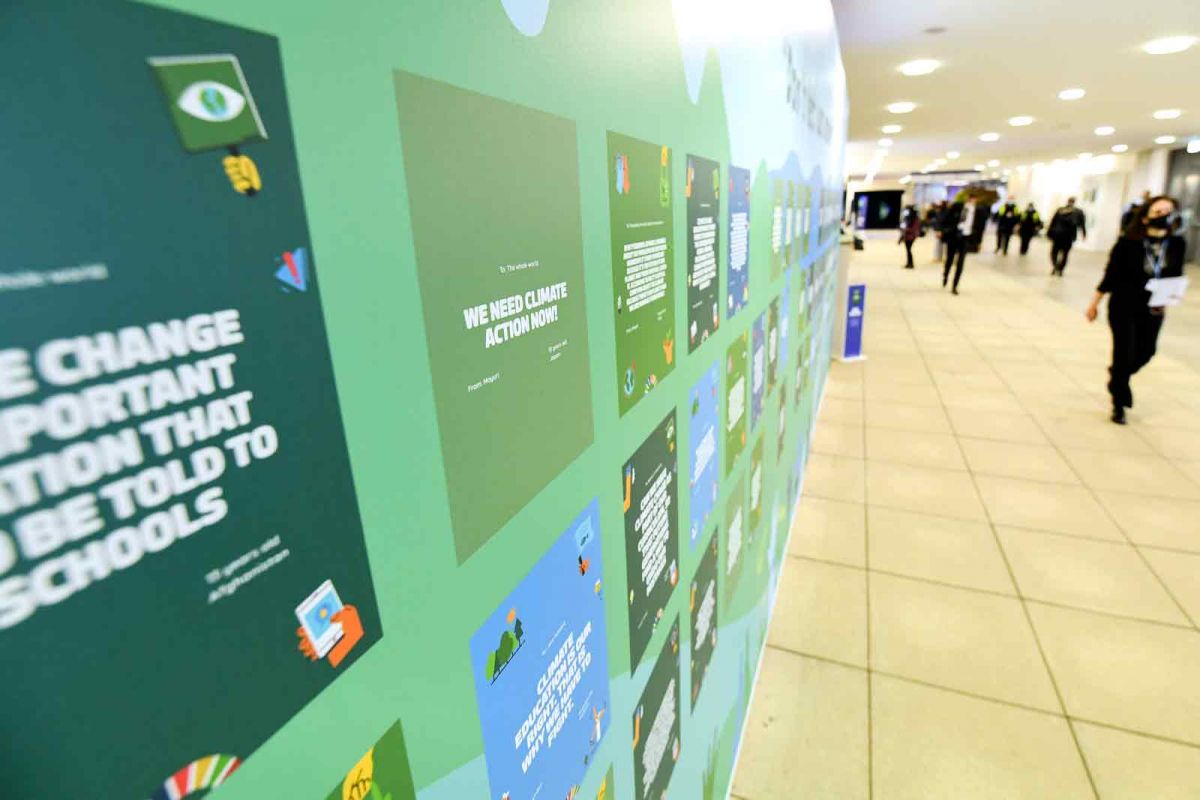

In late 2021, the United Kingdom’s city of Glasgow hosted the most significant intergovernmental climate change negotiations since those that produced the landmark Paris Agreement in 2015. Negotiators gathered in Glasgow for the 26th Conference of Parties to the United Nations Framework Convention on Climate Change (UNFCCC). The event, better known as COP26, attracted global attention.
It was the first formal milestone for assessing progress under the Paris Agreement through a five-yearly renewed submission of national commitments. This is important because the Paris Agreement includes a goal of limiting global heating, ideally to 1.5°C above pre-industrial levels. The danger of failing to achieve this goal was made clear in 2018, in a powerful report by the Intergovernmental Panel on Climate Change. Ahead of COP26, several more strongly worded reports on climate change raised the pressure on negotiators to increase the ambition.

COP26 was more polarized than recent climate change negotiations. The conference was accompanied by large protests in Glasgow and around the world. Civil society groups complained that they had experienced unprecedented exclusion from the intergovernmental talks.
The Glasgow Climate Pact and other outcomes of COP26 have been interpreted both as a significant success, with hard-won negotiations keeping the hope of achieving the 1.5°C target alive, and as a failure to make the changes required to avert the worst impacts of climate change.
The UK COP26 presidency pointed to progress in four areas: (a) mitigation; (b) adaptation, loss and damage; (c) financing; and (d) collaboration. Highlights in these areas include:
- More than 90 percent of the world economy is now covered by commitments to achieve net-zero carbon emissions.
- 153 countries are submitting new emissions targets for 2030 in their Nationally Determined Contributions (NDCs) under the Paris Agreement.
- Pledges of record amounts of adaptation finance include commitments to double the 2019 levels by 2025.
- Private financial institutions and central banks have signalled they are diverting trillions of US dollars towards global net zero.
- Completion of the Paris Rulebook includes a new mechanism and standards for international carbon markets and common time frames for emissions reductions targets.
“In forestry, we had more than 100 leaders join the Glasgow Leaders’ Declaration on Forests and Land Use, covering 80 percent of global forests. The implications of this for the forestry sector and climate change is very powerful.”
— Nur Masripatin, Senior Advisor to Indonesia’s Minister of Environment and Forestry and Chair of the RECOFTC Board of Trustees
The COP26 also agreed to continue consideration of the Koronivia Joint Work on Agriculture at the 56th Session of the UNFCCC’s subsidiary bodies, in June 2022, with a view to recommending a decision for adoption at COP27 in November 2022. This has raised expectations of substantive progress before COP27 takes place.
To understand the implications of COP26 for the land-use sector in the Asia–Pacific region, a group of organizations working on issues related to forests, land and climate change organized a consultation from 1 to 3 March 2022. The consultation brought together 14 experienced negotiators and leading thinkers from the region to discuss the issues and analyse what the outcomes of COP26 mean for climate change and the land-use sector in the region.
“Unlike the forestry and energy sectors, the agriculture negotiators were new to UNFCCC when [the ASEAN Negotiating Group on Agriculture] was formed and the approach was one of trial and error. However, building upon the foundations of the ASEAN Climate Resilience Network, we have been able to build capacities to engage with shaping climate policies.” — Imelda Bacudo, Co-Chair of Global Alliance for Climate-Smart Agriculture and Coordinator for ASEAN Climate Resilience Network
The consultation participants mapped issues and identified entry points for accelerating regional climate action and for contributing to the goals of the Paris Agreement and the Glasgow Climate Pact. By answering 12 questions here, we summarize these experts’ views and highlight the COP26 outcomes of particular relevance to the Asia–Pacific region.
- What were the successes at COP26 for the land-use sector?
- How did the Asian and Pacific countries position themselves at COP26?
- How ambitious are the Asia–Pacific’s Nationally Determined Contributions?
- Will commitments, such as the Leaders’ Declaration on Forests and Land Use, have greater success than previous commitments?
- Has COP26 changed prospects for REDD+ in the region?
- What has COP26 meant for agriculture and land use in the Asia–Pacific region?
- What will the emphasis on supply chain accountability mean for commodity-dependent countries in the region?
- How is the resolution of the Paris Rulebook and Article 6 a significant development for the land-use sector?
- What will the expanding emphasis on engagement with Indigenous Peoples and local communities mean for the region?
- What are the opportunities for integrated approaches to climate change, such as nature-based solutions and biodiversity conservation?
- Do commitments for adaptation in the region meet national needs and expectations?
- What will be the main topics and focus of COP27 in Egypt, and what are the prospects for success?
